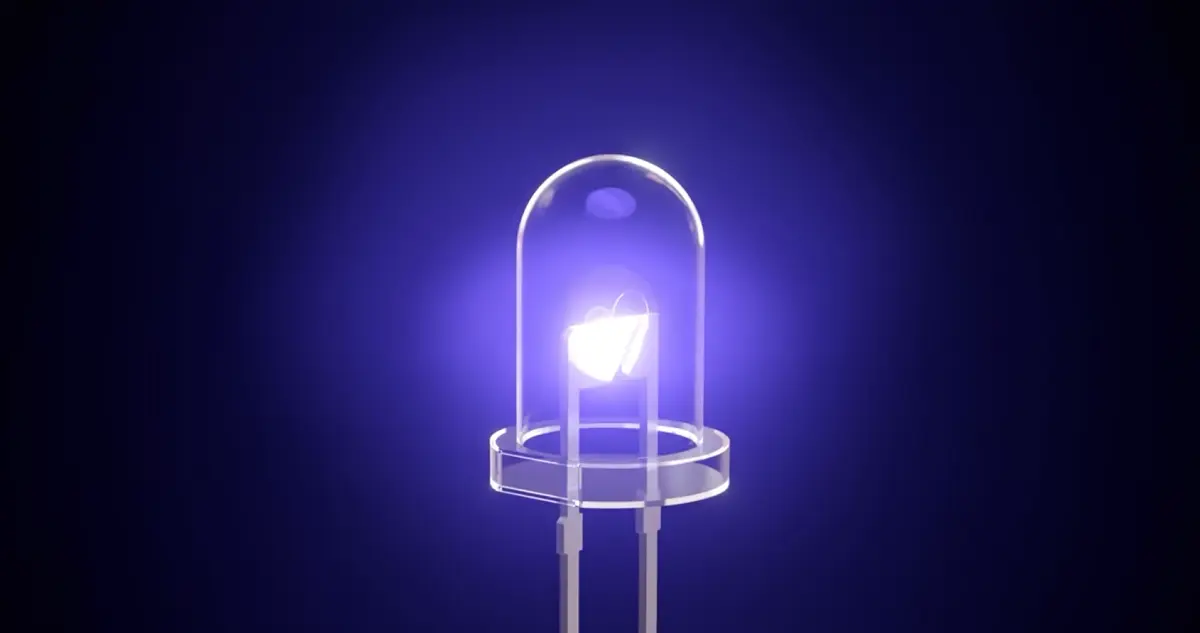In 2014, the Nobel Prize was awarded to Japanese scientist Shuji Nakamura, who invented the blue LED. This may sound like a normal thing when heard for the first time, because LEDs were already present. But the truth is that blue LED has revolutionised science and technology, which we can see in display technology today.
In 1962, General Electric engineer Nick Holonyak created the first visible LED. It glowed a pale red. A few years after that, engineers at Monsanto created a green LED.
But for decades, we only had those two colors. So LEDs could only be used in things like indicators, calculators, and watches. If we could make blue, we could make white and every other colour by mixing red, green, and blue, allowing LEDs to be used for every kind of lighting in the world, from light bulbs to phones, computers, TVs, and billboards. But making blue was proving to be nearly impossible.
Why was it difficult to make a blue LED?
Tube lights started becoming popular in the world from 1960 onwards and were replacing compact lasers. Most of the scientists who were doing research on LED believed that LED could never replace normal lighting because blue LED could not be made.

It was very difficult to make a blue LED. All the scientists were trying and spending a lot of money. Now you must have understood why it was difficult to make blue LEDs, because a combination of such material had to be found whose atoms have such a gap between their outer shells that their energy is equal to the energy of blue light, because the energy of blue light is very high as compared to red and green light, and it was very difficult to get and manufacture such material.
The problem was not only of the material but also of the manufacturing process because the material was available, but the need was to develop a material with a near-perfect crystal structure that has zero imperfections because the more the imperfections at the atomic level, the more the dispersion. There will be a problem in getting the light out, and we will not be able to emit blue light.
Shuji Nakamura’s breakthrough
In the 1960s, every major electronics company in the world, from IBM to GE and Bell Labs, was racing to create a blue LED. They knew it would cost billions of dollars. Despite the efforts of thousands of researchers, nothing worked.
In fact, nothing would have happened if one engineer hadn’t challenged the entire industry and made three revolutionary breakthroughs to create the world’s first blue LED.
Shuji Nakamura was a researcher at a small Japanese chemical company called Nichia. They had recently expanded into the production of semiconductors used in the manufacture of red and green LEDs.
But by the late 1980s, the semiconductor division was on its last legs. They were competing with much more established companies in a crowded market, and they were losing.
Tensions began to mount. Younger employees begged Nakamura to create new products, while senior staff called his research a waste of money. And at Nichia, money was tight. Nakamura’s lab consisted mainly of machines he assembled and welded himself. There were so many explosions in his lab caused by phosphorus leaks that his co-workers stopped keeping track of him.
By 1988, Nakamura’s supervisor became so frustrated with his research that he asked him to quit. Then Suji Nakamura presented a proposal to make blue LEDs, for which he asked for funds. He believed that instead of focusing on finding the material, the manufacturing process should be improved and at Egistify, he learned a manufacturing process called Chemical Vapor Deposition. This method is the most efficient method till date.
Everyone knew that LEDs had the potential to replace light bulbs, because light bulbs, the universal symbol for a bright idea, are actually very bad at making light.
The elusive blue LED, which companies like Sony, Toshiba, and Panasonic had failed to create. What if Nichia was the one to make it?
Nakamura did not get funds to buy the required machine, so he started developing his own machine. He started making his own machine by collecting parts from here and there. It was obvious that it was not giving efficient and good production.
There were many defects in the crystals made by him. He did research on making Gallium Nitride which made very promising crystals and after many iterations, one day he made perfect Gallium Nitride crystals.

In this, he made more iterations like this, he made P and N type diodes and when light was emitted from it, it turned out to be blue light.
After this, he did many more years of research to increase the intensity of this light and to make it powerful and finally in 1990, he made such a powerful LED that it could be used in space lighting.

After this invention, Nichia company hit the jackpot. In 10 years, the size of the company increased three times, that is why in 2014, he made blue LED. Considering his importance, he was awarded the Nobel Prize.

About the Author
Manish love to write and he is a Civil Servant. Users can follow Manish on Instagram ![]()
15 People Who changed the world with own passion
People who changed the world are amazing, which has been created by the passion of…
Why my cat Ignoring me ?
Often, cats purr when their incoming stubbornness is ignored. This behavior may seem like stubbornness…
What is the right age to send children to pre-school?
Most parents get their children admitted to play school or preschool only after the age…
Korean Women’s Secrets to Maintaining a Fit and Healthy Lifestyle
Korean women are recognised for their slim and balanced bodies and bright complexions. Many people…
What will happen when a boy and a girl with the same name get married?
You should know that Indians keep some names in such a way that it is…
Bobby: 50 years of Love, Fashion, and Pop Culture in Bollywood
Only a few films have left such a deep mark on the history of Bollywood…
FAQs
Who was awarded the Nobel Prize in 2014 for inventing the blue LED?
Japanese scientist Shuji Nakamura
Who created the first visible LED and when?
General Electric engineer Nick Holonyak in 1962.
Who was Shuji Nakamura?
huji Nakamura was a researcher at a small Japanese chemical company called Nichia.
Why was it difficult to make a blue LED?
Because blue light has a higher energy than red and green light, scientists had to find a material with atoms whose outer shells had a gap equal to the energy of blue light, which made creating a blue LED challenging.






